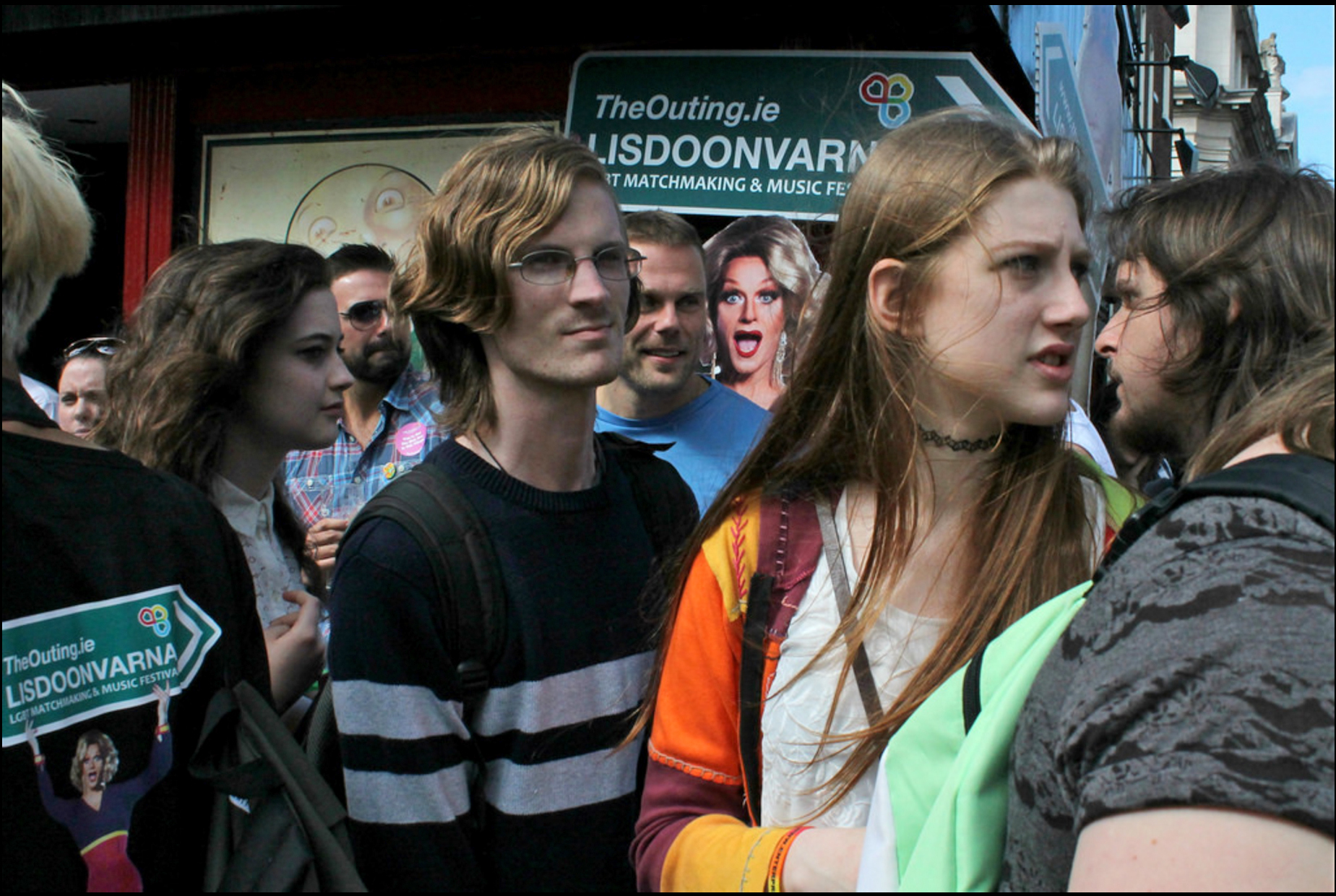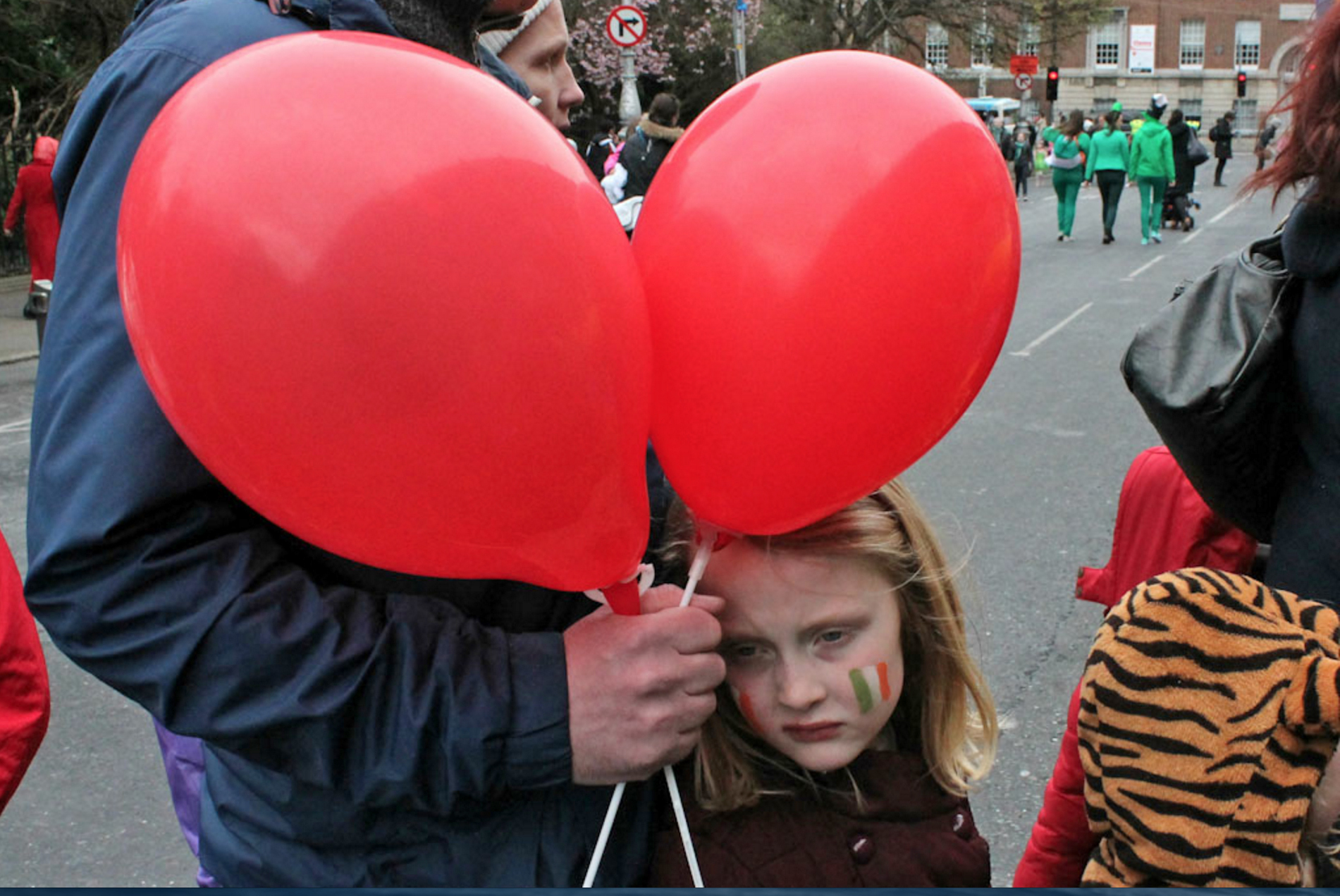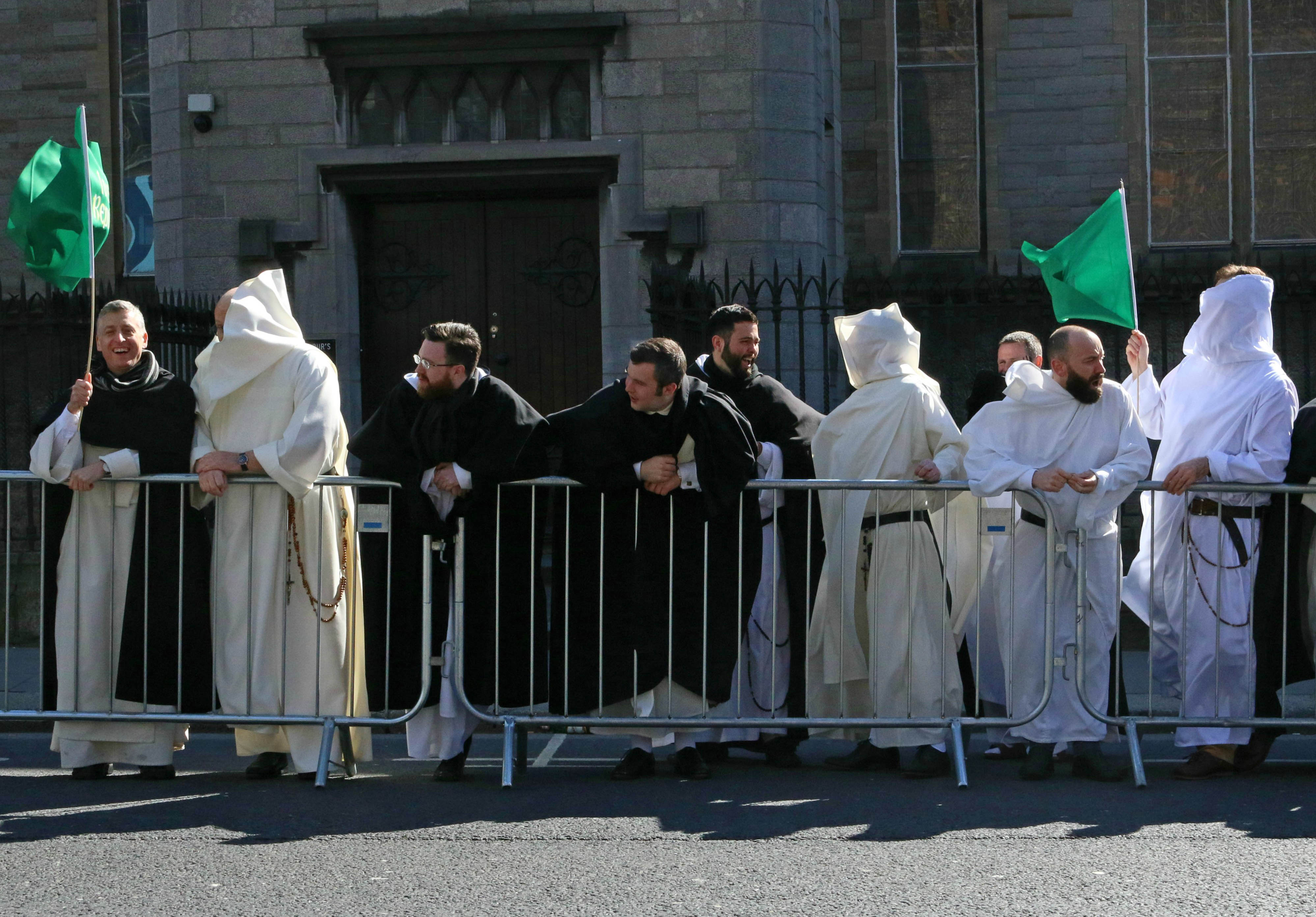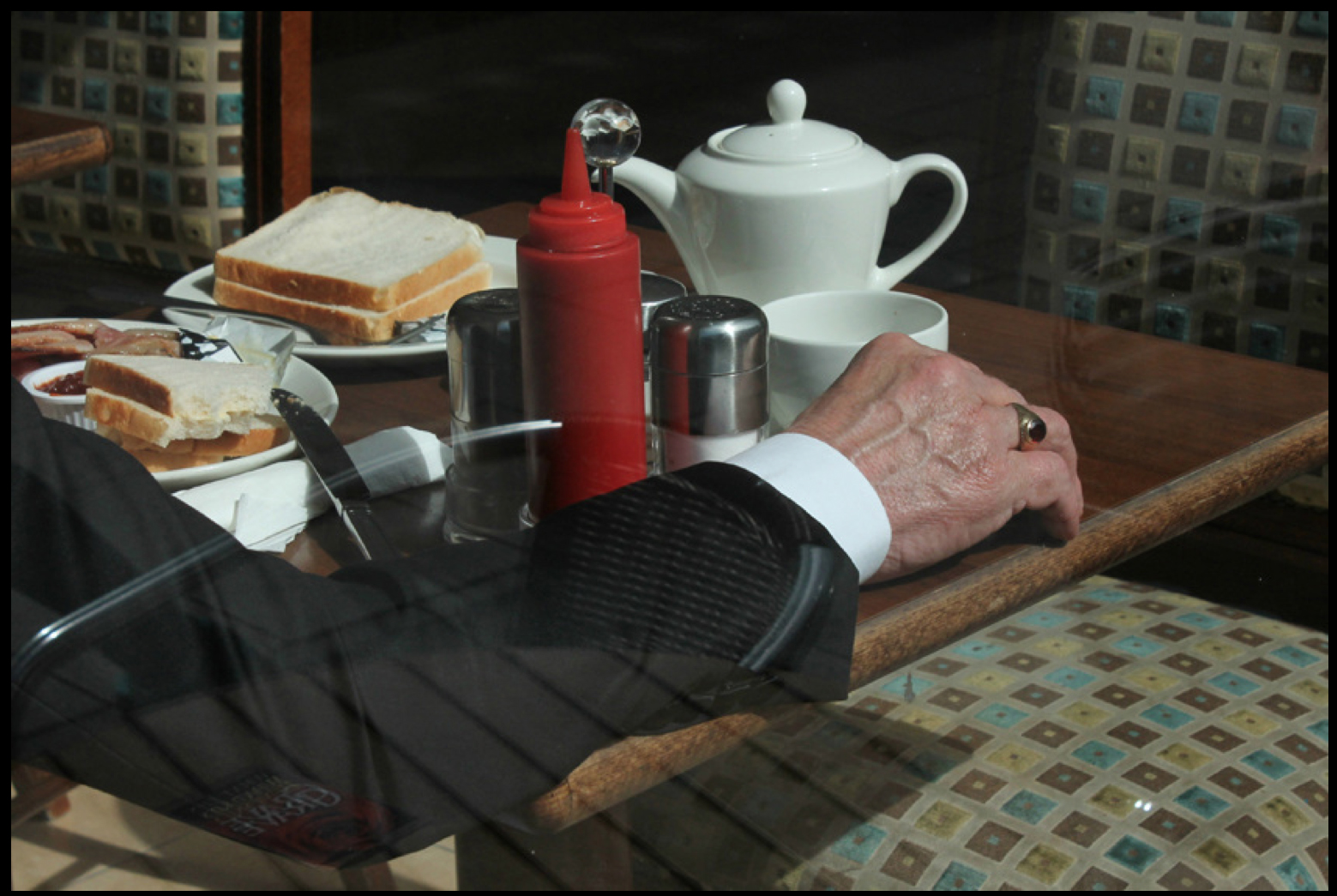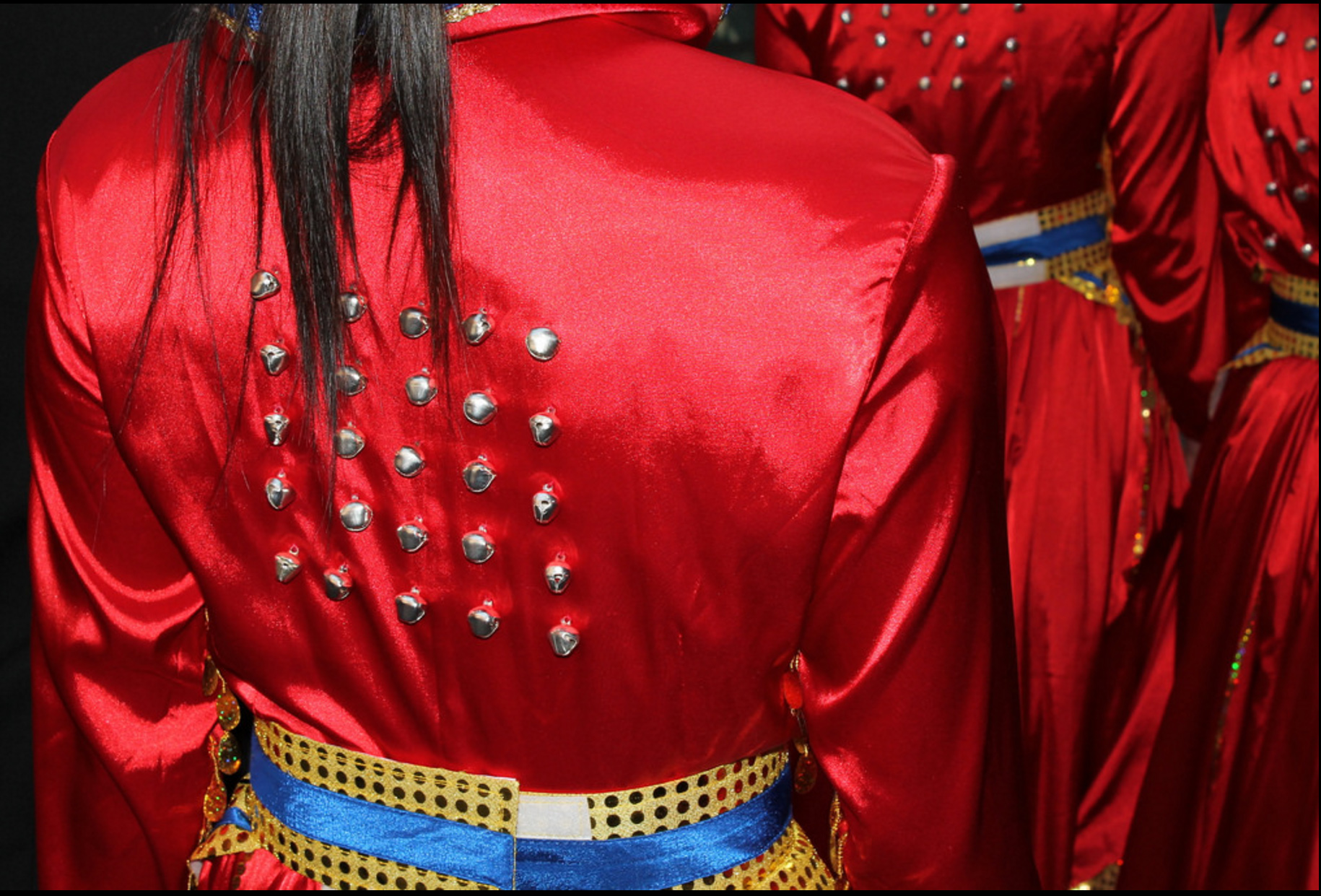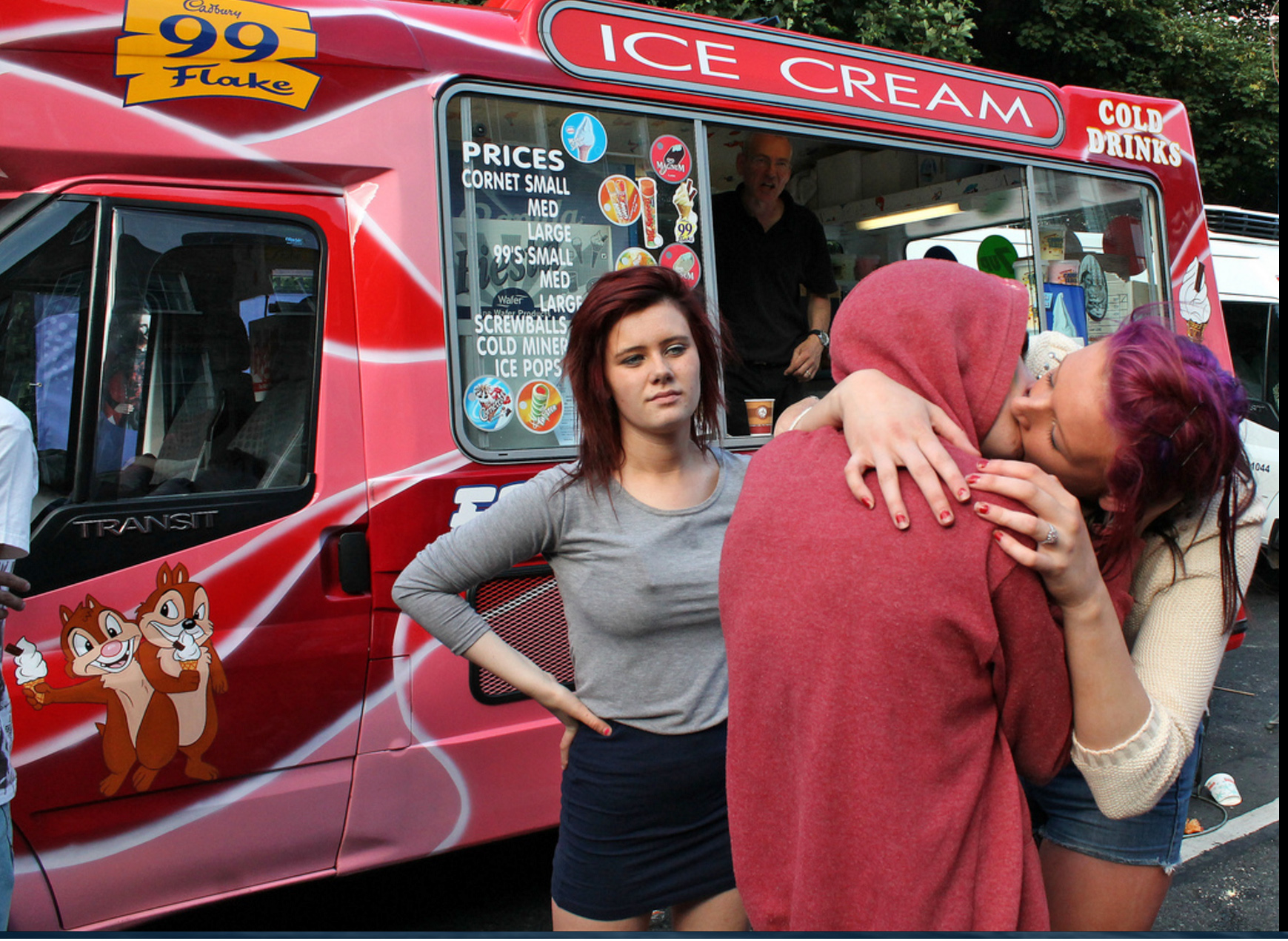GroundTruth Emerging Photographer Danielle Houghton was named the Irish Times Amateur Photographer of the Year for 2015.
DUBLIN — Ireland is commemorating the 100th anniversary of the Easter Rising, the 1916 rebellion against British rule. The armed insurrection began on Easter Monday with the aim of occupying government buildings in Dublin. It started the battle to end British rule in Ireland and to establish an independent Irish Republic. The British army moved in with troops and artillery to put down the rebellion. Most of the leaders of the rising, including Patrick Pearse, were subsequently executed. But the six-day rebellion is seen by historians as paving the way for an Irish Free State.
“You must not grieve for all this. We have preserved Ireland’s honour and our own. Our deeds of last week are the most splendid in Ireland’s history. People will say hard things of us now, but we shall be remembered by posterity and blessed by unborn generations. You too will be blessed because you were my mother.” ― Patrick Pearse, in a letter to his Mother, 1 May 1916 written in Arbour Hill Barracks, Dublin.
To celebrate the centenary, a large parade marched through Dublin on Easter Sunday featuring the Irish Defence Forces, Gardaí and the Emergency Services. I decided to walk the route of the parade, taking thousands of steps and a few thousand photographs to absorb what I feel was the heart and soul of the day, getting up close and personal with the crowds of both Irish citizens and visiting spectators.
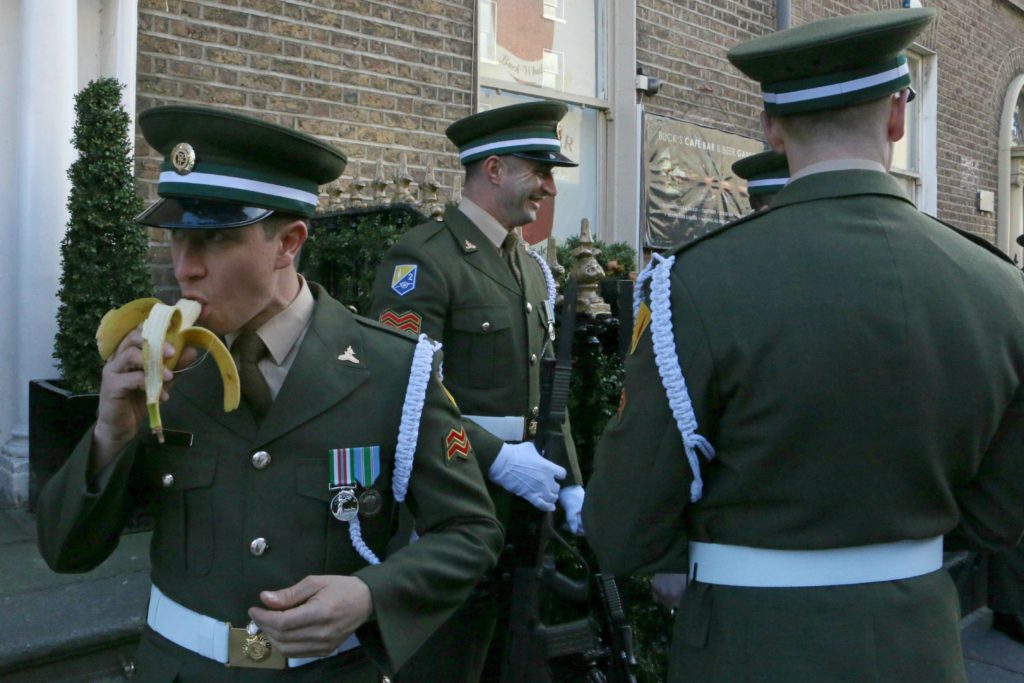
I began just before the starting point where the Defence Forces were waiting and getting ready. What struck me was the good mood everybody was in, with lots of light banter. I think the military must have felt so happy to be able to honor Ireland in this way, but as I strolled along I couldn’t help wonder about the serious mood that the soldiers 100 years ago would have felt.
“One by one they were all becoming shades. Better pass boldly into that other world, in the full glory of some passion, than fade and wither dismally with age.” ― James Joyce, Dubliners
For a street photographer, parades are about a lot more then the main event. We tend to look for action a little bit away from the obvious, and at important events like this rising commemoration, the atmosphere is extra special when I’m with the watching crowd. Ireland is firmly rooted in its past and it was wonderful to be part of a country bursting with pride. The mood was calm and reverent among the members of the public, and in keeping with modern Ireland, people from all cultures came out in support of the parade. I couldn’t help but think that the original leaders would be thrilled to see the impact their sacrifices made so many years later.
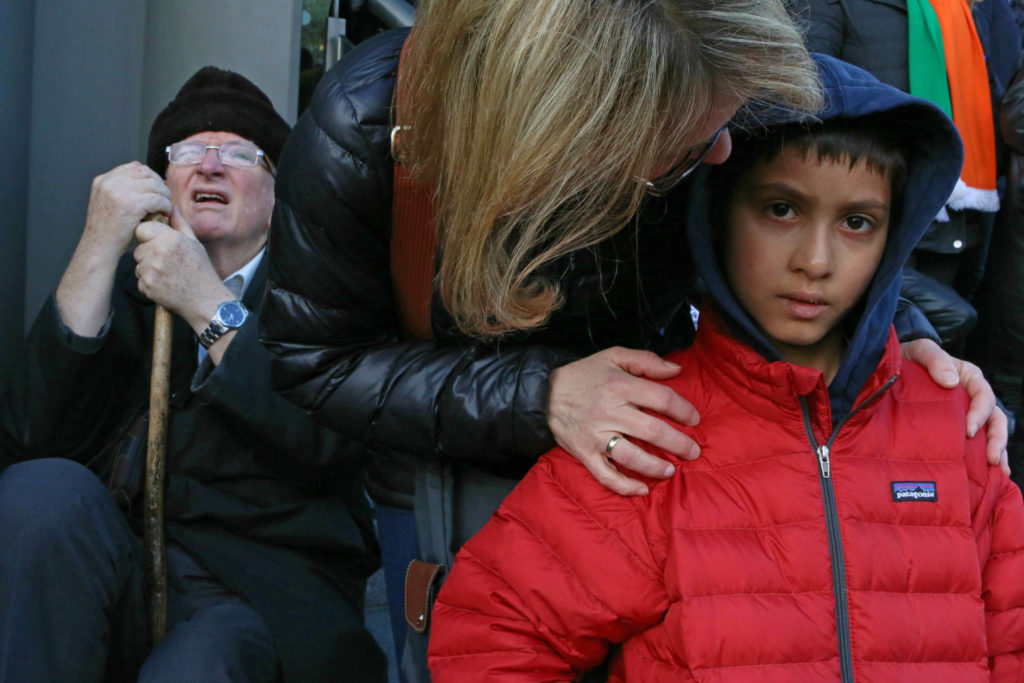
Events of more recent years have changed Ireland forever, especially in terms of religion, which used to be so deeply ingrained in everyday life. The Catholic stronghold and traditions are obviously on the wane, yet a fascination lingers for me. When out on the streets, I still get excited at any opportunity to photograph a member of the church in traditional garb. So as I meandered towards the last section of the parade I stumbled across a bunch of friars enjoying the march, full of cheer and bonhomie. They waved, they smiled and waved their flags at the Defence Forces and showed extra enthusiasm for any passing tank and gun, which, for me, seemed especially curious coming from men who preach about peace. It got me wondering about how the violence of 1916 helped the future of Ireland, and if the violent uprising might also have been perceived as against the Catholic ethos of Ireland that ran so deep at that time?

The shot of the friars captured a moment of physical humor, a kind of scene that is very much a part of the street photography genre. The challenge in street photography can be to capture an emotion or more of a story. Unlike other genres, shooting on the street yields a very low success rate of “keepers” to shots taken, as people move and do not pose. I think to be a street photographer for a long time you must have a deep passion for it. Luckily, I like the act of shooting and can happily walk for hours, camera in hand, “collecting” my observations of the joys and quirks of people and places.
To get a photograph where the elements fall into place is a rare, but exciting occurrence, and what you strive for every time you go on an adventure of the unknown. It is hard to articulate why street photographs mean so much to me. The images can document something interesting, or fun, or sad, or they can simply show the look of a given time. I like preserving a moment that one can revisit and enjoy, and if other people enjoy your vision, that is even better. For me, street photography is a wonderful celebration of people, places and moments in time.
Photographer’s Note
Street photography, to those that enjoy it, is a wonderful celebration of people, places and moments in time. The history of our rich visual culture would have disappointing gaps had street photography not been practiced since the very early days of the medium. However, there will always be people who question whether it is ethical. Obviously, that may be a somewhat valid concern depending on the context, but I think the majority of street photographers practicing today do adhere to an ethical code of conduct and are mindful of not crossing the line into exploitation. Politeness, smiles and honest explanations often go a long way to diffuse any potentially difficult situations.
I usually photograph somebody as I genuinely like something about them, so if confronted, my answer is usually ready to hand. I respect a person’s right to say no and have occasionally deleted shots upon request. I believe children should be included in street photography as they are part of the rich tapestry of life, and my long term hope is that more people will come to see street photography as a positive way of documenting the times and world we live in.







